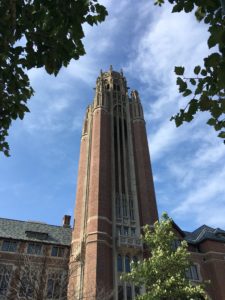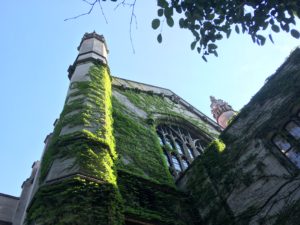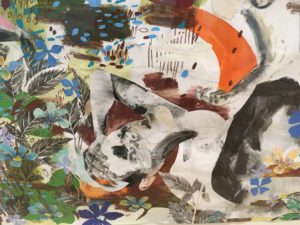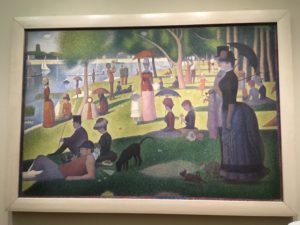Week One at the Learning and Communication Lab
Upon my arrival to Chicago, I felt a great sense of relief. All of my built up anxiety and fear about staring this internship melted away as I got settled and rested in my new apartment. And any remaining nerves quickly fled the next morning as I started work. I was greeted with immense warmth and care the moment I walked into the office.
Luckily, my first day was spent putting up flyers to recruit new participants for the study, which gave me the opportunity to get my bearings on the city, and get a metro card! We went to Wicker Park: a sort of eclectic yet slowly modernizing neighborhood in the north of Chicago. Let me tell you, the bookstores and coffee shops were right up my hipster alley. Returning to the lab, I got the opportunity to observe my first referential communication game.
These games are used to observe how children and parents construct language together through referential communication. Here, effective communication is accomplished when the speakers have a shared referent. To come upon a shared referent or “conversational pact”, conversations often involve implicit negotiations, or back and forth discussion to determine the subject. The pact creates a shared understanding of the subject at hand between two specific individuals in a given conversation. In studies with adults, researchers have argued that forming this type of common ground is essential to effective communication.
Experiments with children, however, have yielded more mixed results. Many older children are able to form these conversational pacts, while many younger children are not. And that is where parents come in, as they are frequently interacting with their children and, hypothetically, slowly bolstering their ability to communicate effectively using conversational pacts.
So, the lab is working with 4-8 year-olds, observing how children and parents learn to communicate effectively, and then further seeing how this relates to language learning. They do this through an iPad game they call Tangrams. The participants are instructed to sit across from each other as they are shown two images. One of the two images has a blue box around it, and participant A is instructed to describe this image to participant B. Participant B must then select the image described, and then the two switch tasks and get a new set of images.
While the images are shown at random, they will re-appear twice or more, which typically elicits some type of name or common phrase for the obscure object. That is a conceptual pact being formed.
What is interesting to see is the difference in method to describe an image between age groups. For example, many of the six-year-old participants use words, sounds, and gestures to talk about the image, therefore, making it more difficult for the child and parent to form a conceptual pact as they are speaking, in a way, two different languages. Whereas with two adults, we see that they are almost instantaneously forming these pacts. However, as the game continues, some of the children begin to use some of their parent’s language, and occasionally, the parents use the child’s vernacular. This is especially intriguing because there is no pressure to accomplish this task rapidly; the participants have all the time in the world to speak about the object in any way they please. So it seems as if we have some type of internal pressure and desire to be able to communicate with the utmost efficiency. And if this is true, it may reaffirm any social-verification theories which assert that people have an innate desire to be understood and known by others, which is where the created pressure to be efficient may arise from. (By the way, this is just my personal and informal analysis based on observation).
As for extracurricular activities, I have been doing many joyous tasks, such as: buying groceries, unpacking, doing laundry, unjamming my keys from the front door, feeding myself, and many more.
The Art Institute of Chicago and the Museum of Contemporary Photography also had free Museum Days on July 4th, so I spent my Independence Day geeking out. I also thought it fitting to use the long weekend to take a lot of naps (especially because when I sleep I can turn the air conditioner on!).
I am more than excited to see what the next six weeks of my internship hold!






There are no comments published yet.